
Tingena affinis is a species of moth in the family Oecophoridae. It is endemic to New Zealand and has been found in the Nelson region. Adults are on the wing in December and January.
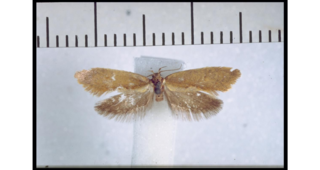
Tingena amiculata is a species of moth in the family Oecophoridae. It is endemic to New Zealand and has been observed in the Nelson, Tasman and Canterbury regions. This species has been collected amongst Hebe species and shrubland at altitudes of up to 4500 ft. It is similar in appearance to its near relatives Tingena basella and Tingena laudata.

Tingena anaema is a species of moth in the family Oecophoridae. It is endemic to New Zealand and has been collected at Lake Wakatipu, Invercargill and Stewart Island / Rakiura. The adults of the species are on the wing in December.

Tingena decora is a species of moth in the family Oecophoridae. It is endemic to New Zealand and has been collected at Lake Rotoroa and adults are on the wing in February.

Tingena enodis is a species of moth in the family Oecophoridae. It is endemic to New Zealand and has been collected in and around Nelson. This species can only be reliably distinguished from its close relatives through the different shape of its male genitalia. As at 1939 a female specimen had yet to be assigned to this species.
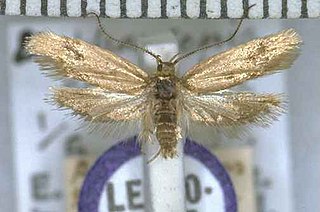
Tingena epichalca is a species of moth in the family Oecophoridae. It is endemic to New Zealand and has been observed at Arthur's Pass and in the mountains around Otira. This species is very similar in appearance to Tingena aphrontis but can be distinguished on the basis of different antennal ciliations of the male of the species. Adults are on the wing in January and inhabit alpine zones, frequenting alpine vegetation on the edge of screes at altitudes of between 3 – 4000 ft.
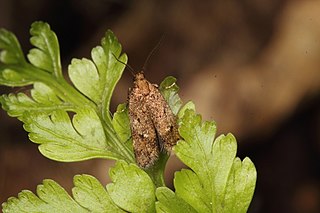
Tingena fenestrata is a species of moth in the family Oecophoridae. It is endemic to New Zealand and has been observed in the South Island. This species has been observed in native forest habitat in December.

Tingena grata is a species of moth in the family Oecophoridae. It is endemic to New Zealand and has been found in the South Island. The adults of this species are on the wing from November to January.
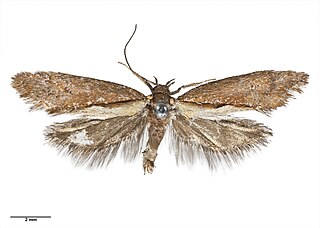
Tingena laudata is a species of moth in the family Oecophoridae. It is endemic to New Zealand and has been observed in Fiordland and Otago. Adults of this species are on the wing in January.
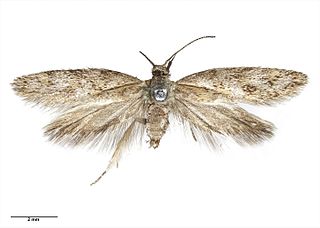
Tingena levicula is a species of moth in the family Oecophoridae. It is endemic to New Zealand.

Tingena monodonta is a species of moth in the family Oecophoridae. It is endemic to New Zealand and has been found in both the North and South Islands. This species inhabits native beech forest at altitudes of between 2500 - 3000 ft. The adults of the species are on the wing from November and December.

Tingena morosa is a species of moth in the family Oecophoridae. It is endemic to New Zealand and has been found in the South Island in Nelson including at the Dun Mountain and in the Canterbury region. This species inhabits native forest at altitudes from 2000 to 3000 ft. Adults of this species are on the wing in December.

Tingena nycteris is a species of moth in the family Oecophoridae. It is endemic to New Zealand and has been observed in the North and South Islands. This species inhabits native forest and scrubland and adults are on the wing from October to January.

Tingena opaca is a species of moth in the family Oecophoridae. It is endemic to New Zealand and has been observed in the southern parts of the South Island. Adults of this species are on the wing in December.
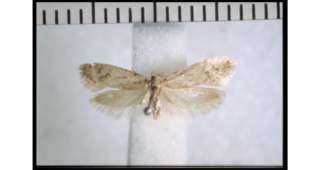
Tingena pallidula is a species of moth in the family Oecophoridae. It is endemic to New Zealand and has been collected in the Nelson and Tasman regions. Adults of this species are on the wing in February and have been collected by beating undergrowth.
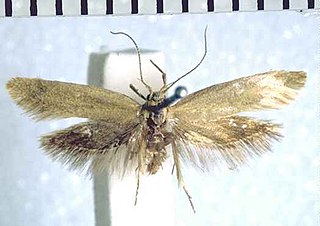
Tingena paula is a species of moth in the family Oecophoridae. It is endemic to New Zealand and has been observed in Canterbury. Adults of this species are on the wing in November.

Tingena seclusa is a species of moth in the family Oecophoridae. It is endemic to New Zealand and has been observed in the Canterbury and Otago regions. The larvae of this species are litter leaf feeders and the adults of this species are on the wing from December to February.

Tingena serena is a species of moth in the family Oecophoridae. It is endemic to New Zealand and has been observed in Southland and Dunedin. The adults of this species are on the wing in December and January.

Tingena vestita is a species of moth in the family Oecophoridae. It is endemic to New Zealand and has been collected in Fiordland. The adults of this species are on the wing in January.

Trachypepla minuta is a moth of the family Oecophoridae first described by Alfred Philpott in 1931. It is endemic to New Zealand and has been collected in Auckland. Adults of this species are on the wing in December. It is distinguishable from similar species as it is smaller in size and darker in appearance than other species in the genus Trachypepla.




















